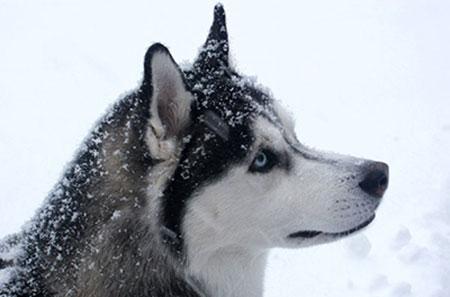
Keeping Pets Safe in Cold Weather
Wednesday, January 4, 2017
Oklahoma’s winter temperatures can drop very low. Add in the Oklahoma wind and it can spell trouble for your pets’ health. Here are some tips from the American Veterinary Medical Association to keep your pets safe during cold weather.
Just like people, your furry family members tolerate the cold at different levels. Factors such as how thick their coat is, body fat scores, activity level and general overall health need to be taken into consideration.
Has your pet had its yearly wellness exam? Cold weather may worsen some medical conditions such as arthritis. Make sure your pet is as healthy as possible as cold weather approaches.
If your dog doesn’t tolerate the cold, shorten your dog’s walks. Arthritic and elderly pets may have more difficulty walking on snow and ice and may be more prone to slipping and falling.
Long-haired or thick-coated dogs tend to be more tolerant; however they are still at risk in the cold. Short-haired dogs feel the cold faster because they have less protection.
Short-legged pet may become cold faster because their bellies and bodies are more likely to come into contact with snow-covered ground.
Pets with diabetes, heart disease, kidney disease, or hormonal imbalances (such as Cushing’s disease) may have a harder time regulating their body temperature. The same goes for very young and very old pets. All of these animals may be more susceptible to problems from temperature extremes.
You may want to be buy your dog a sweater or coat to wear when it is outside. Some owners even use booties to protect their pet’s feet. Be sure to make sure the booties fit properly.
Check your dog’s paws frequently for signs of cold-weather injury or damage, such as cracked paw pads or bleeding. Sudden lameness during a walk may be due to an injury or to ice accumulation between the dog’s toes. You may be able to reduce the chance of iceball accumulation by clipping the hair between your dog’s toes.
During walks, your pet’s feet, legs and belly may pick up deicers, antifreeze, or other chemicals that could be toxic. When you get back inside, wipe down or wash your pet’s feet, legs and belly to remove these chemicals to reduce the risk of your dog being poisoned after licking them off his/her feet or fur. Consider using pet-safe deicers on your property to protect your pets and others in your neighborhood.
Cats and dogs should be kept inside during cold weather. Like people, dogs and cats are susceptible to frostbite and hypothermia and need to be protected. While some dogs bred for colder climates, such as huskies, can tolerate the cold, no pet should be left outside for long periods of time in below-freezing weather.
Cold weather brings the risks of severe winter weather, blizzards and power outages. Prepare a disaster/emergency kit and include your pet in your plans. Have enough food, water and medicine on hand to get through at least five days. Include any prescription medications as well as heartworm and flea/tick preventives.
If your pet is whining, shivering, slows down or stops moving, seems weak or starts looking for a place to burrow, get them back inside. They are showing signs of hypothermia. Frostbite is harder to detect and may not be recognized until a few days after the damage is done.
If you think your pet has hypothermia or frostbite, consult your veterinarian immediately.
by Elisabeth Giedt, DVM
Veterinary Viewpoints is provided by the faculty of the OSU Veterinary Medical Hospital. Certified by the American Animal Hospital Association, the hospital is open to the public providing routine and specialized care for all species and 24-hour emergency care, 365 days a year.
